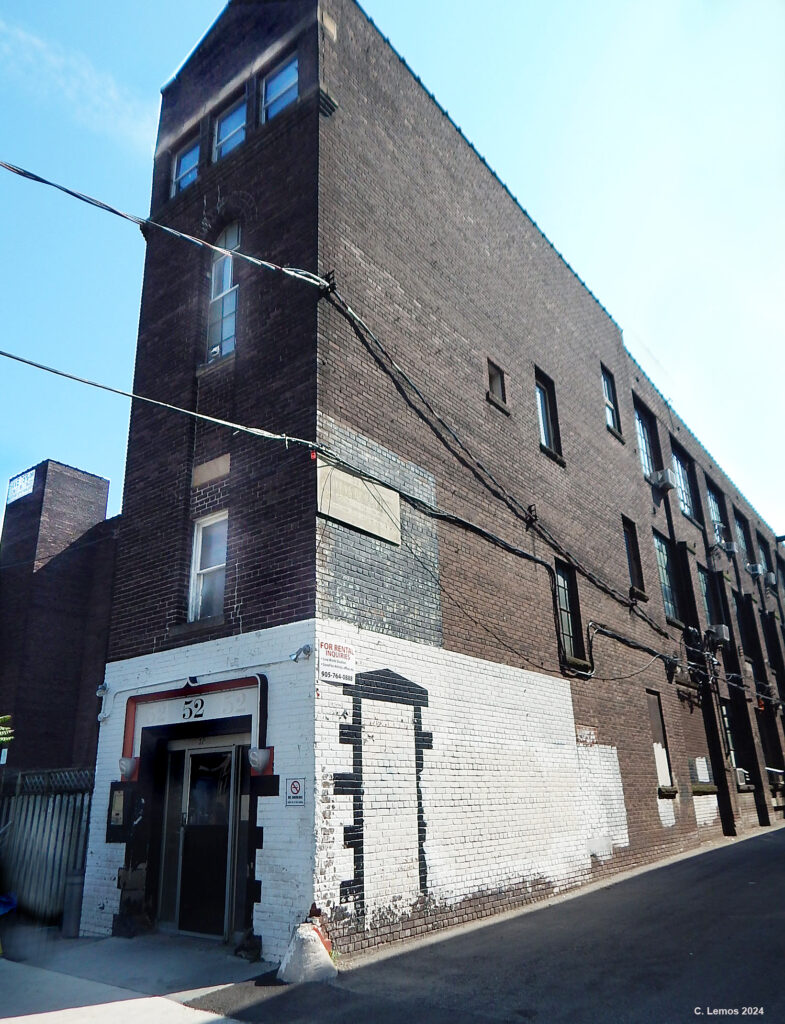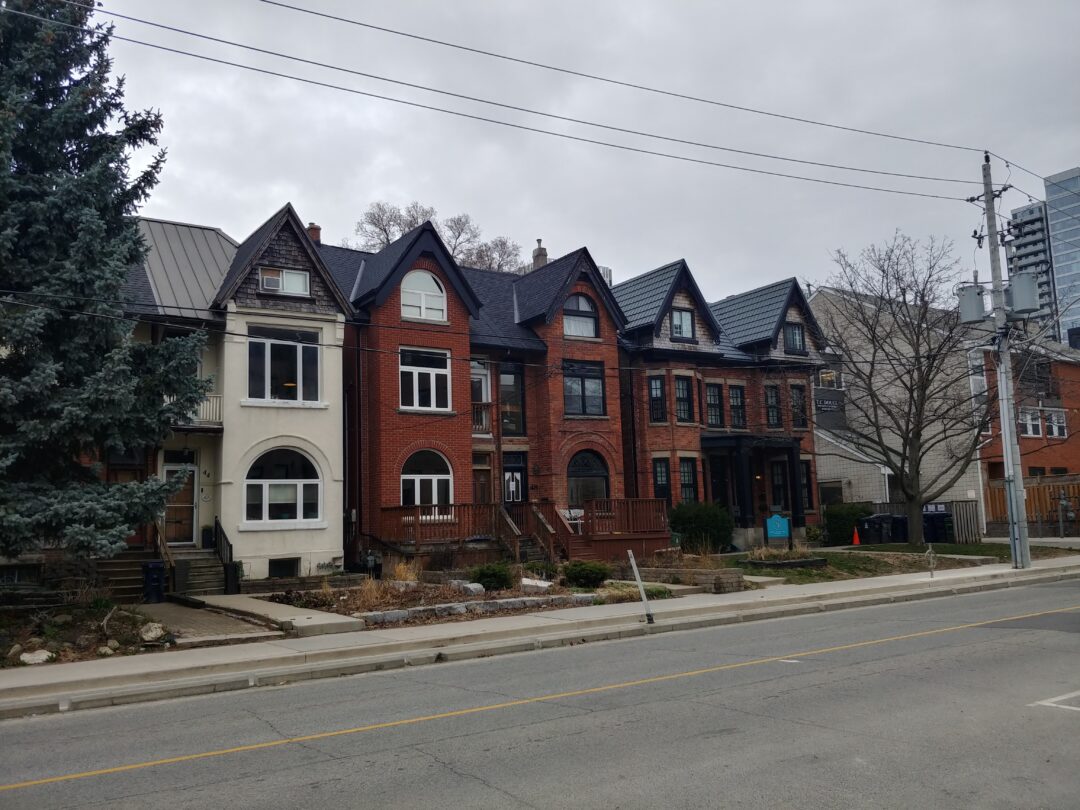Cory Lemos –
As a Corktown history enthusiast, my interest is often sparked by stories I read or buildings I see while walking in the neighbourhood. Recently I came across a 2009 article published by Now Magazine that referred to 52 St. Lawrence Street as, “That creepy building in Corktown…”
The building’s history started with Joseph Simpson, a native of Virginia who arrived here in the early 1860s and soon after started the Toronto Knitting & Yarn Factory on Front Street. The business name changed a couple of times, with the last being that of Joseph Simpson Sons Limited. This acknowledged Rupert and Ernest Simpson as the company’s new proprietors following their father’s death in 1898.
Building on the family legacy and to reduce the workload at their main knitting plant, the brothers decided to have a second factory devoted entirely to carding and spinning.
In 1918 architect Charles J. Gibson was hired to design and oversee construction of a factory building. Land records reveal that a suitable location was not found until the following year with the leasing of a partial lot on St. Lawrence Street from trustees of the Toronto General Hospital.
Soon after, plans for a three-storey building of brick, steel and timber got under way. To this day, the building’s main entrance displays two bespoke family shields each with the letter “S” identifying the firm’s name.
Succeeding the death of Rupert and Ernest Simpson, the business continued at the St. Lawrence Street location under new directors. In 1945 it merged with the Monarch Knitting Company Limited of Dunnville, Ontario. About five years later, the company’s knitting facility in Toronto’s east end closed, with new owners operating it as a textile and clothing factory.

Continental Pants Manufacturing Limited was the last clothing factory at 52 St. Lawrence St., owned by brothers Phineas, Joseph and Philip Kurtz. The pants they made included casual, workwear, and jeans for adults and children.
Wayne Kurtz, a third-generation descendant, said, “as styles changed, they [brothers Kurtz] modified to the times.” The company wholesaled to jobbers along Spadina, retail and independent shops.
Using fabrics that were at least 90 percent cotton, the companies trademark slogan sign was “Gotta Be Cotton.” Though faded with time, its sign continues to hang on the building.
Toronto’s clothing industry prospered through the 1970s and into the 90s, but following Canada’s accession to the North American Free Trade Agreement in 1994, foreign-made clothing became cheaper. This culminated in the closing of many domestic manufacturers, among them Continental Pants.
For three quarters of a century, 52 St. Lawrence Street housed a factory that produced consumer goods. As the buildings stood vacant, two siblings took ownership and applied to the city in 1999 to rezone it for live-work units. Upon approval the brothers renovated the building, giving it a new purpose while preserving a unique neighbourhood structure from landfill. Asked why they chose this direction, the reply was, “it seemed like the right thing to do.”
As Toronto continues to struggle with a housing crisis, repurposing empty buildings to live-work units can be part of the solution.




